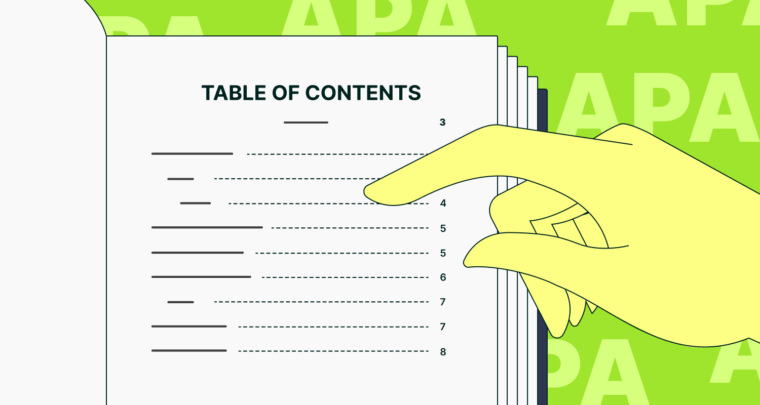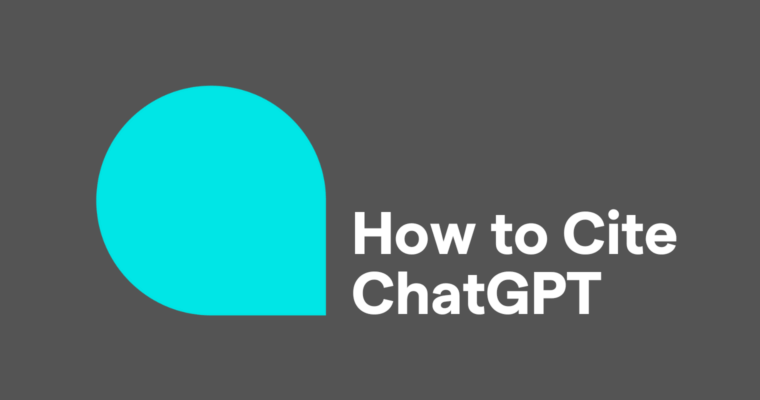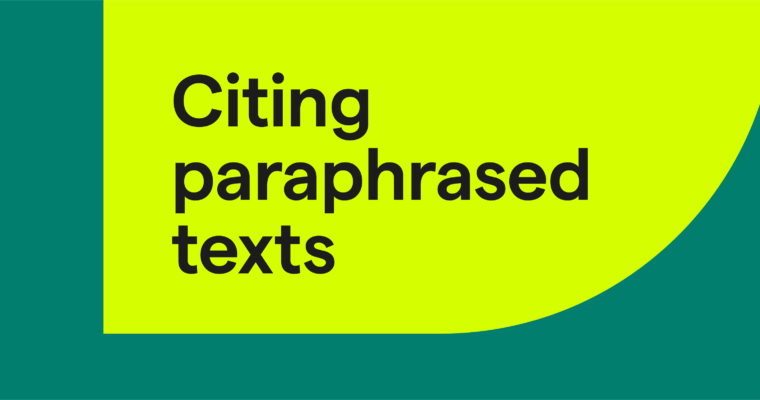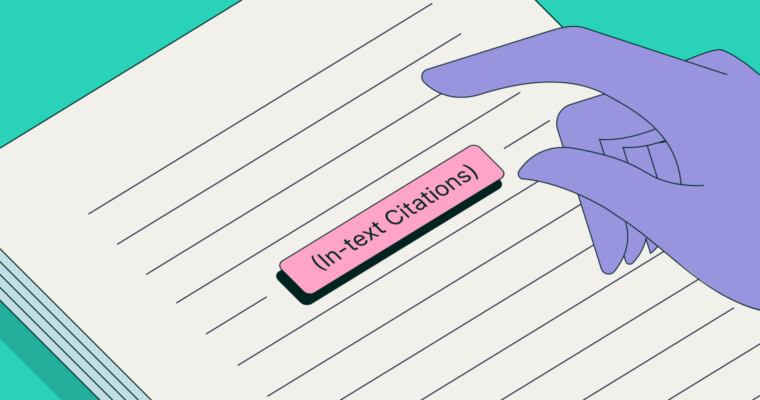
Do I need a table of contents in APA? How do I format an APA table of contents? Do I still use the standard APA paper format guidelines? While not every paper needs a table of contents, the ones that do need it should adhere to a specific format. In this guide, we explain everything you need to know about the correct table of contents format for APA.
What is an APA table of contents?
In general, a table of contents is a small section or page at the beginning of a work that outlines all the chapters or section titles and their page numbers. It’s a navigational guide for the convenience of readers, so they can jump straight to the part that interests them.
Typically, papers in the fields of psychology, sociology, anthropology, and other social sciences use the APA format. Business papers sometimes do, too. APA guidelines don’t require a table of contents, but the guidelines describe the format to use if you do include a table of contents. So, if you’re working with APA style but want to include (or have been told to include) a table of contents, the following will tell you how.
Do I need a table of contents in APA?
No, you do not need a table of contents in APA; it is not a requirement. However, longer papers like a dissertation or thesis paper still benefit from a table of contents because they contain so many parts. While tables of contents are not mandatory, long papers in APA should still include them as a courtesy to the reader.
Table of contents format for APA
An APA table of contents follows the same general guidelines of the standard APA paper format. Specifically, follow these rules for a perfect APA table of contents:
1 The APA table of contents comes after the title page and before the introduction or start of the body text. Although the APA has no formal rules about where to put it, the table of contents is still considered supplemental—not a part of the main paper. If your paper has an abstract, ask your professor or superior whether to put it before or after the table of contents.
2 Begin the table of contents on a new page. At the end of the table of contents, include a page break and start the next section on a separate page.
3 Use 1-inch margins on each side of the page, the standard APA paper format.
4 Use pages that are 8½ by 11 inches—another part of the standard APA paper format.
5 The APA paper format uses a header (called the “running head”) on every page, including the table of contents. For student papers, this includes only the page number, flush right. For professional papers, this includes the page number flush right and also the work’s title, shortened to fifty characters or less, flush left.
6 The APA format is somewhat flexible when it comes to font types and sizes. While you’re free to experiment, we suggest using either Arial (11 points), Calibri (11 points), Lucida (10 points), or Times New Roman (12 points). (Microsoft has a new default font, called Aptos, which replaces Calibri. You can probably use 11-point Aptos instead of one of the others we named, if it’s available in your software.)
7 Your table of contents, like the rest of your paper, should be double-spaced: every other line should be blank.
8 Add a title for the table of contents on the first line. The title should be bolded and centered, but use the same font type and size as the rest of the paper. The actual title should be something simple like “Table of Contents” or “Contents.”
9 The table of contents should be structured in order by page number, not alphabetical order.
10 Include every section and subsection title in the table of contents, along with its starting page number. Every time you use a Heading 1, Heading 2, or Heading 3 title in your paper, that section heading should go in the table of contents.
11 The titles for each main section or chapter start at the left margin (1 inch from the edge of the paper), with no indentation. All subsections are listed underneath the main section title they relate to, and they use an extra indentation of ½ inch. If the subsections have their own sub-subsections, list their titles underneath with another extra indentation, totaling 1 inch from the margin.
12 Use title capitalization for section names (capitalize the first letter of each major word).
13 Include the reference page, appendices, and index in the table of contents if applicable.
14 Do not include the title page, or the abstract (if your paper has one), in the table of contents.
15 Leaders, sometimes called dot leaders, are those dot lines that connect a title on the left to its page number on the right. They are optional.
……………………………
APA table of contents example
2
Contents
Introduction 3
Method 4
Participants 4
Measures 5
Self-esteem 7
Gender-Equality Indicators 9
Procedure 10
Results 10
Gender and Age Effects Across Cultures 13
Culture-Level Correlates 17
Discussion 17
Limitations and Future Directions 18
Conclusion 18
How to create an APA table of contents in Microsoft Word
Microsoft Word can format a table of contents automatically, although you’ll still have to edit it to make sure it complies with APA guidelines.
It’s easiest to create the table of contents last. The most important thing is to consistently use Heading 1, Heading 2, and Heading 3 for all your section titles in the body text.
Word can then detect each of these headings and automatically create your table of contents, placing Heading 2 titles underneath the Heading 1 entries, and Heading 3 titles underneath their Heading 2 section. Once it’s created, you may still need to reformat things like indentation, spacing, font, etc.
When you’ve finished your text and are ready to add the table of contents, simply put the cursor above the main text, go to the References tab, and click Table of Contents. The location of the References tab varies depending on your version of Word, but for many people, it will be in the second horizontal menu along the top of the document window.
APA table of contents FAQs
Do I need a table of contents in APA?
No, you do not need a table of contents in APA; it is not a requirement. However, longer papers like a dissertation or thesis paper benefit from having a table of contents because they contain so many parts. While tables of contents are not mandatory, long papers in APA should still include them as a courtesy to the reader.
What is the table of contents format for APA?
An APA table of contents follows the same guidelines as the standard APA paper format. Specifically, use double-spacing and one-inch margins on all sides of the page. Subsections use an extra indent and are placed under the section that includes them.
How do you create an APA table of contents in Microsoft Word?
It’s easiest to create the table of contents in Microsoft Word as the final step after you’ve written the body text. Be sure to consistently use Heading 1, Heading 2, and Heading 3 when writing the body text. Then go to References > Table of Contents and Word will automatically generate your table of contents, based on section titles using Headings 1, 2, and 3.





